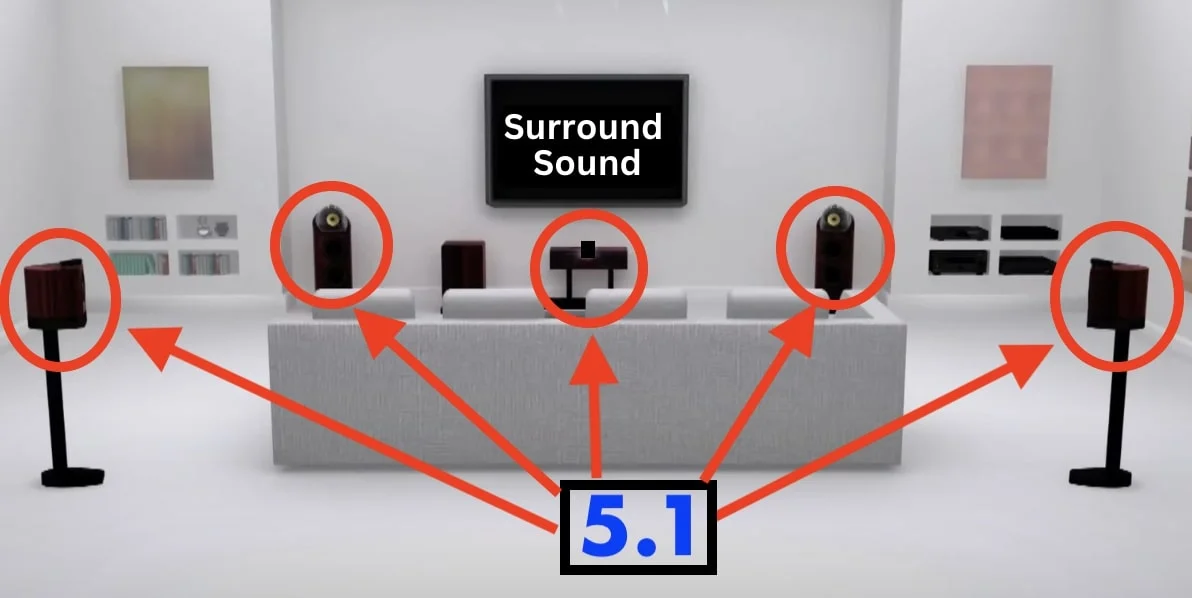
Soundscaping Your Home: The Art of Acoustic Design for Modern Living
Create a harmonious living space with the art of home soundscaping.Ever stepped into a room and felt an immediate sense of calm wash over you, even before you've fully taken in the visual details? That's the magic of soundscaping at work. As an interior designer with a passion for creating truly harmonious living spaces, I've seen firsthand how transformative the right acoustic environment can be. It's like orchestrating your home's own symphony, where every element plays its part in perfect harmony.
What is Soundscaping?
Soundscaping goes beyond simply reducing noise. It's about crafting an intentional auditory experience that enhances your well-being and complements your home's aesthetic. Think of it as the acoustic equivalent of interior design – we're not just eliminating unwanted sounds, we're curating a soundscape that supports the function and mood of each space.
The Impact of Sound on Well-being
The impact of sound on our daily lives is profound, yet often overlooked. Poor acoustics can leave us feeling stressed and drained without knowing why. On the flip side, a well-designed soundscape can boost productivity in your home office, promote relaxation in your bedroom, and make family gatherings in the living room more enjoyable. It's about creating an environment where you can hear yourself think – or not think at all, if that's what you need.

Assessing Your Home's Acoustic Environment
So how do you start assessing your home's acoustic environment? I always tell my clients to start by simply listening. Close your eyes in each room and pay attention to what you hear. Is there an annoying hum from appliances? Echoes that make conversations difficult? Or perhaps too much outside noise filtering in? A fun (albeit slightly odd-looking) test is to clap loudly in different areas of a room. If you hear a sharp, ringing echo, you've got some acoustic work to do!
Sound-Absorbing Materials
When it comes to materials, there's a whole world of sound-absorbing options that can seamlessly blend with your decor. Plush fabrics, cork walls, and acoustic panels disguised as art are just a few of my favorites. I once transformed a client's echoey living room into a cozy haven using strategically placed bookshelves (filled with books, of course) and thick, textured curtains. The difference was like night and day – suddenly conversations flowed easily without everyone having to raise their voices.
Smart Speaker Placement
Speaker placement is another crucial aspect of soundscaping. It's not just about where you put them, but how you angle them. I always chuckle when I see expensive speakers pointed at bare walls – all that beautiful sound, bouncing away from the listeners! A good rule of thumb is to create an equilateral triangle between your main listening position and your speakers. And remember, every room is unique – don't be afraid to experiment until you find that sweet spot.

Natural Sound Elements
Nature is one of our best teachers when it comes to pleasant soundscapes. The gentle trickle of a small indoor fountain can mask irritating background noises while creating a sense of tranquility. Plants not only look great but can help absorb and diffuse sound. I'm constantly amazed by how a few well-placed leafy friends can soften a room's acoustics.
Technology in Soundscaping
Technology is opening up exciting new possibilities in home soundscaping. Smart speakers with adaptive audio can adjust their output based on the room's acoustics and occupancy. Noise-cancelling systems can create pockets of quiet in even the busiest homes. It's like having a personal sound engineer at your disposal!
Room-by-Room Soundscaping Guide
When it comes to specific rooms, each has its own acoustic needs. In bedrooms, the goal is usually to create a cocoon of calm. Thick carpets, upholstered headboards, and heavy curtains can work wonders. Home offices benefit from a balance of sound absorption to reduce echoes and some background noise to aid concentration – complete silence can be surprisingly distracting!
DIY Soundscaping Projects
For the DIY enthusiasts out there, creating your own acoustic panels can be a fun weekend project. With some wooden frames, fabric, and sound-absorbing material, you can make custom pieces that are both functional and decorative. Just be prepared for some curious looks if you start clapping at your walls to test them out!
When to Consult a Professional
While there's a lot you can do yourself, sometimes it's worth calling in the pros. If you're dealing with serious structural noise issues or planning a home theater, an acoustic consultant can provide invaluable expertise. Look for someone who understands both the technical aspects of sound and the principles of interior design – your soundscape should be heard and not seen, after all.
The Future of Home Soundscaping
Looking to the future, I'm excited about the potential of AI in personalized soundscaping. Imagine a home that automatically adjusts its acoustic properties based on your activities and preferences throughout the day. We're not quite there yet, but the technology is developing rapidly.
Conclusion
In my experience, a well-soundscaped home doesn't just sound better – it feels better. It's a space where you can truly relax, focus, and connect with others without the constant intrusion of unwanted noise. So why not start your acoustic journey today? Your ears (and your stress levels) will thank you. Remember, creating your perfect soundscape is a process. Like composing a beautiful piece of music, it takes time, experimentation, and a willingness to listen. But the result? Pure harmony.
Biophilic Design: Bringing Nature Indoors for Healthier Living






Comments
No comments yet. Be the first to comment!
Leave a Comment